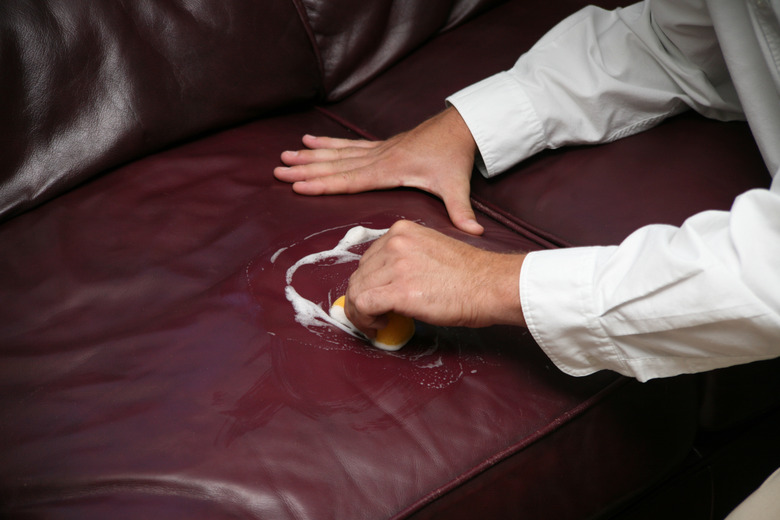How To Clean And Restore Leather Furniture
Leather furniture is beautiful, classic and timeless – when it looks nice. Keeping leather looking soft, supple and comfortable requires ongoing care, but it's easier to maintain clean leather than to try to restore dry, damaged leather.
Still, sometimes we realize the error of our ways only after we've allowed leather to become brittle and cracked. The wonderful thing about leather is that it can be nurtured back to good health with some careful cleaning, conditioning and restoration.
Maintenance Cleaning and Conditioning
Maintenance Cleaning and Conditioning
Dirt that lingers on leather can cause small scratches and abrasions. Therefore, your cleaning routine should start with a thorough vacuuming to remove surface dust and particles.
Next, reach for a cleaning product specifically designed for leather. Spray or dab the product on a small, inconspicuous area of the furniture in order to test for a possible undesirable reaction, such as discoloration, before continuing.
Using a soft cloth or sponge, gently rub the leather cleaner in all directions in order to allow it to sink into the grain. Once the leather cleaner has dried completely, follow it up with a conditioner, using the same multidirectional method for application.
Wait for the conditioner to soak in. Then, use a clean soft cloth to wipe away any excess oils that may have risen to the surface of the leather.
Fixing Stains and Discoloration
Fixing Stains and Discoloration
Numerous leather care products exist to restore leather, but products you already have on hand around the house can keep your leather looking clean, too.
For example, use cornstarch to soak up oil stains. Rub the cornstarch into the grain to reach as much oil as possible and then vacuum the powder. You may need to repeat this process if more oil rises to the surface.
A cotton ball dampened with rubbing alcohol can wipe away ink stains. Gum and super glue can be removed by rubbing an ice cube wrapped in a cloth to harden it and make it easier to peel off. Use a hair dryer to melt away remnants and then wipe it up with a dry cloth.
Fixing Cracked or Scratched Leather
Fixing Cracked or Scratched Leather
Fix minor shallow cracks or scratches by rubbing leather oil into the crack with a cotton swab until it appears smooth. For larger cracks, you can attempt to glue the seams together with special leather glue. However, replacing the entire leather panel is the only way to guarantee a good-as-new appearance for deep cracks or peeling leather. For best results, this should be done by a professional.
